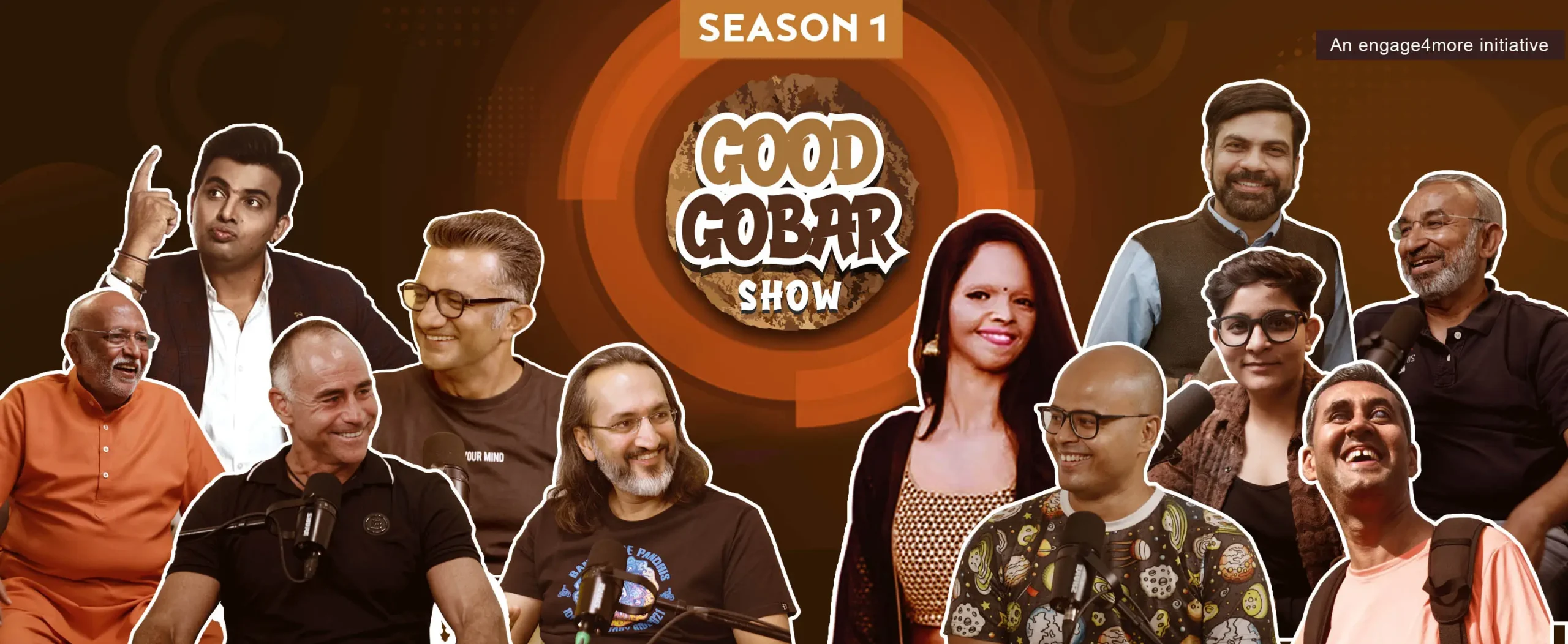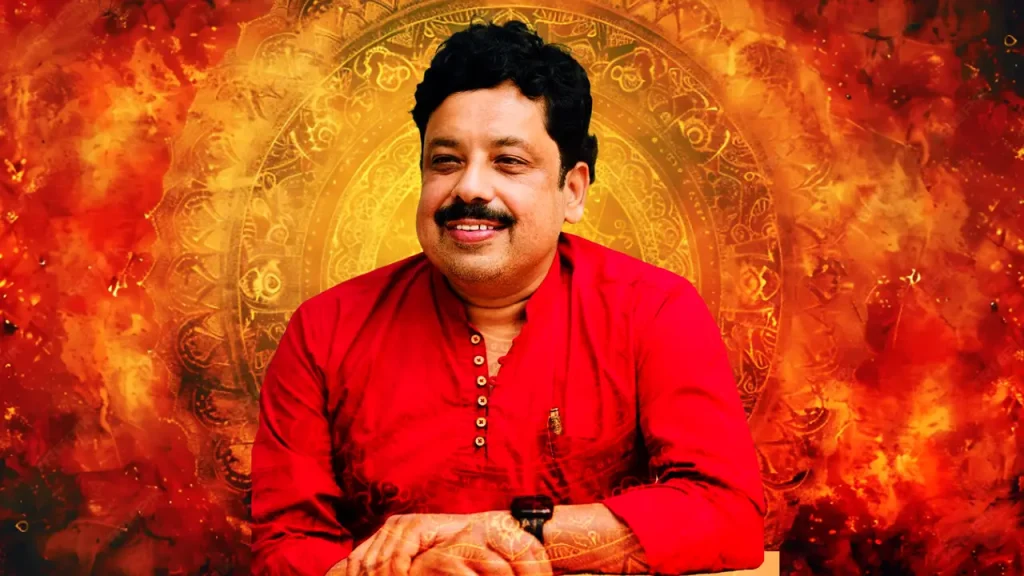Anand Neelakantan’s Villains Reveal Complexity and Contrarian Paths Forward: From Mythology to Life Lessons
Imagine sitting next to a crackling lamp, notebook in front of you, willing to listen to the stories of heroes, of triumph, of battles inscribed in gold on the scrolls of history. But the storyteller leans in and says, “Let’s hear it from the other side.” And suddenly, Ravana, Duryodhana, and all the other Indian mythological villains are not just background music, they are the show. That is the kind of aura that Anand Neelakantan weaves in his story.
Anand Neelakantan is not merely a narrator; he is a weaver of viewpoints. He does not give you a sword to root for the hero; he gives you a magnifying glass to study the villain. And in studying him, you learn something shocking: perhaps the villain is not really a villain at all. Perhaps the hero’s tale is not the sole one that deserves to be heard.
The Storyteller and Motivational Speaker: Anand Neelakantan
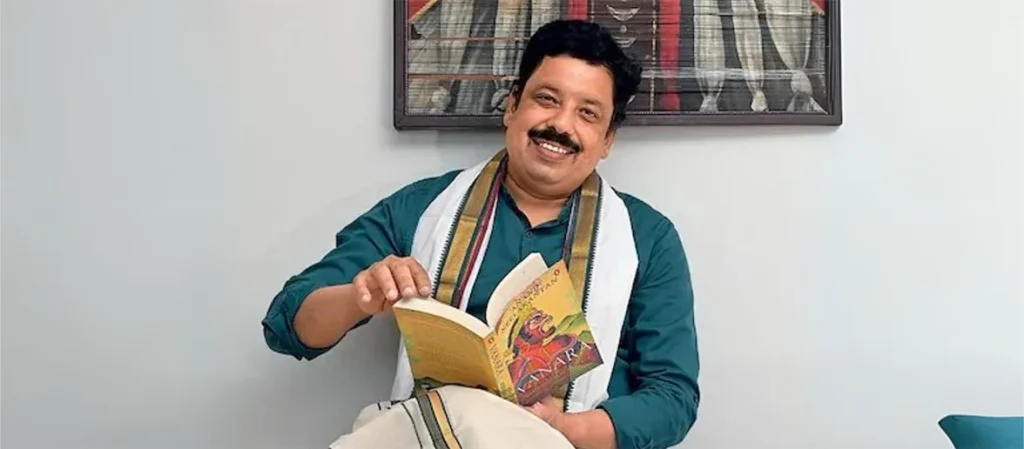
But before we understand the essence of his craft and understand the ambiguity of morality and ethics as he paints it, let’s get to know the man himself. Anand Neelakantan hails from Thrippunithura in Kerala, but don’t let geography fool you, because his imagination spans continents, epochs, and the mythic depths of human psychology.
A professional engineer, Anand toiled for Indian Oil before the call of stories proved too great. It’s a curious turnabout, from pipelines and pumps to epics and villains, but perhaps that is precisely what instilled in him his distinctive point of view: a systematic mind that could break down compound narratives, coupled with a bold curiosity about human nature.
He broke out onto the literary scene in 2012 with Asura: Tale of the Vanquished, and soon his novels were leading bestseller lists. He did not merely narrate; he challenged readers, encouraged them to question established accounts, and brought mythology alive, urgent, and morally complex.
Anand Neelakantan has written more than 16 books since then, covering mythological fiction, fantasy, non-fiction, and children’s literature, and has even worked on TV and OTT scripts. He writes columns for some publications such as The New Indian Express, and his work on The Rise of Sivagami solidified his position as a writer who can excel in both literary and film spaces with equal ease.
And though his novels make the villains sexy, they also tell you something about Anand himself: a writer who is not afraid of ambiguity, intrigued by human paradoxes, and who is passionately concerned about putting questions in readers’ mouths that they didn’t know they needed to have asked. In short, he is not only offering you a tale; he is taking you into his universe; a place where villains talk, heroes stumble, and the distinction between them is mouthwateringly ambiguous.
Ravana Wasn’t Ten Heads, He Was Ten Questions
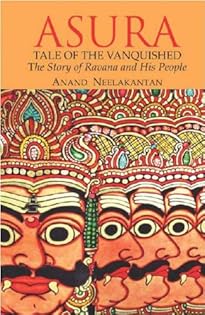
Let us begin with Ravana, the king of Lanka himself. In Asura: Tale of the Vanquished, Anand presents us with a Ravana who isn’t a flat demon, but a multidimensional character; a scholar, a father, a king struggling with the burden of ambition and ethics. It’s a view that compels the reader to grapple with difficult questions: Was he bad? Or was he a product of his time, misinterpreted, demonized by victors’ history? (Image courtesy: media-amazon)
What is interesting about Asura is that it doesn’t go the easy route of “redeeming” Ravana. It shows us his ambitions, his cunning, and even his weaknesses. Anand asks us to judge the figure who has been demonized by tradition without prejudices, and in doing so, he challenges us to think about the very definition of morality. Are there born villains, or are they shaped by society, circumstance, and human weakness?
Consider contemporary storytelling: from DC’s Joker to Game of Thrones’ Cersei Lannister, people are transfixed by the villain’s nuance. Anand accesses that same curiosity, but he accomplishes it with an epic, mythic palate that is distinctly Indian. And after you read the book, you know, Ravana does not simply disappear out of your mind; he stays behind, triggering a rethinking of every black-and-white narrative you have ever consumed.
Anand Neelakantan’s Duryodhana: Villain or Victim of Narrative?
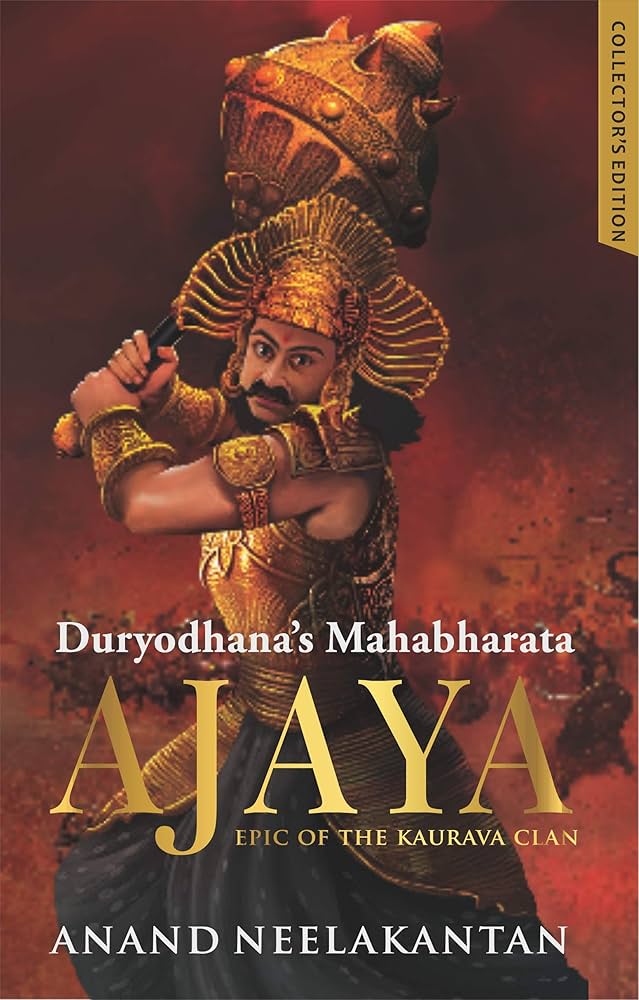
If Ravana is a prism through which we wonder at morality, Duryodhana is a prism through which we wonder at narrative bias. Anand’s Ajaya duology turns the Mahabharata upside down, presenting the tale from the Kauravas’ point of view. Duryodhana, usually dismissed as greedy, arrogant, and immoral, is somebody whose choices, fears, and loyalties are fully exposed. (Image courtesy: media-amazon)
When reading Duryodhana’s tale, you begin to see small injustices embedded in the epic: favoritism, family pressure, and social expectation. Anand doesn’t make excuses for Duryodhana’s shortcomings, but he frames them. He makes readers think: how much of what we deem villainy is simply the product of history being written by the victors?
And this is the cunning genius of Anand’s approach: as you believe you are merely reading a work of fiction, you are undergoing a literary grilling. You pose questions to yourself that you did not realize you had: Could the hero be mistaken? Can power and morality ever exist together without friction? Why do we glorify conquest without demurring at the price? Duryodhana’s tale is not only thrilling; it is disarmingly so, and it lingers.
When Anand Neelakantan’s Sivagami Stole the Spotlight
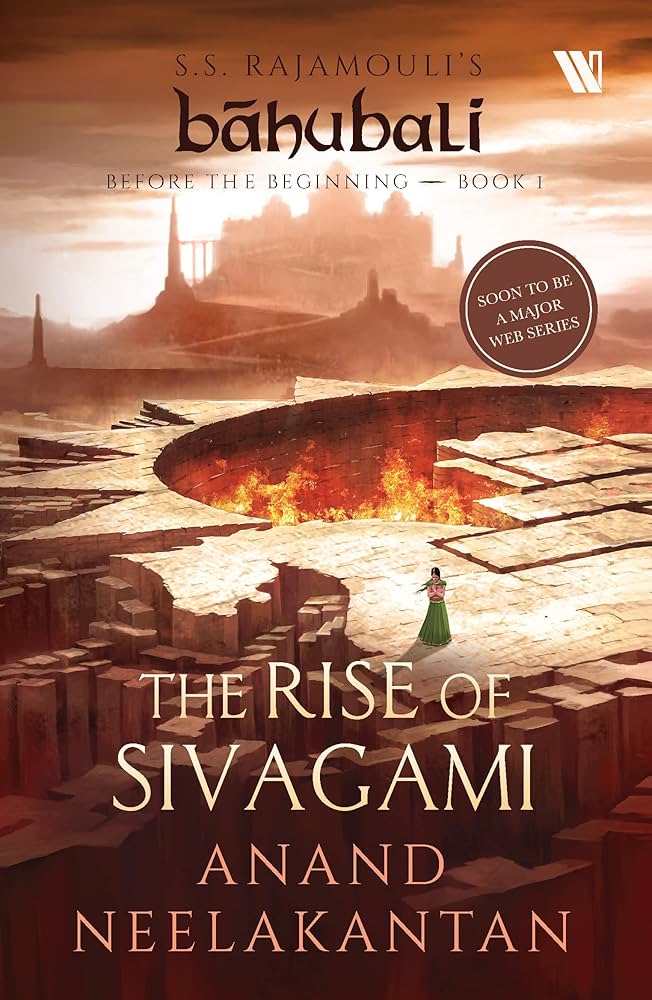
Anand’s mastery of the grey comes to life not only in mythological retellings but in cinematic tie-ins as well. His prequel to Baahubali, The Rise of Sivagami, dives into the political and emotional intricacies of Mahishmati’s most formidable queen. Here, a character who in the films is largely enigmatic is given voice, motives, and a nuanced moral compass. (Image courtesy: media-amazon)
This novel didn’t merely fill out a character, it filled out a universe. It brought together cinema and literature in a way that encouraged readers to step past the curtain of the on-screen saga. And it showed that even within a tale full of sweeping battles and feats of valor, the bad guy, or the morally ambiguous type, can take over your imagination.
Anand’s style reflects how contemporary storytelling in OTT shows works: character layers win out over action. Viewers no longer simply clap for the hero’s victory; they’re fixated on the question of why the characters do what they do, how greed and loyalty clash, and how the distinction between heroism and villainy is so often ambiguous.
The Asura Way: What Villains Teach About Life
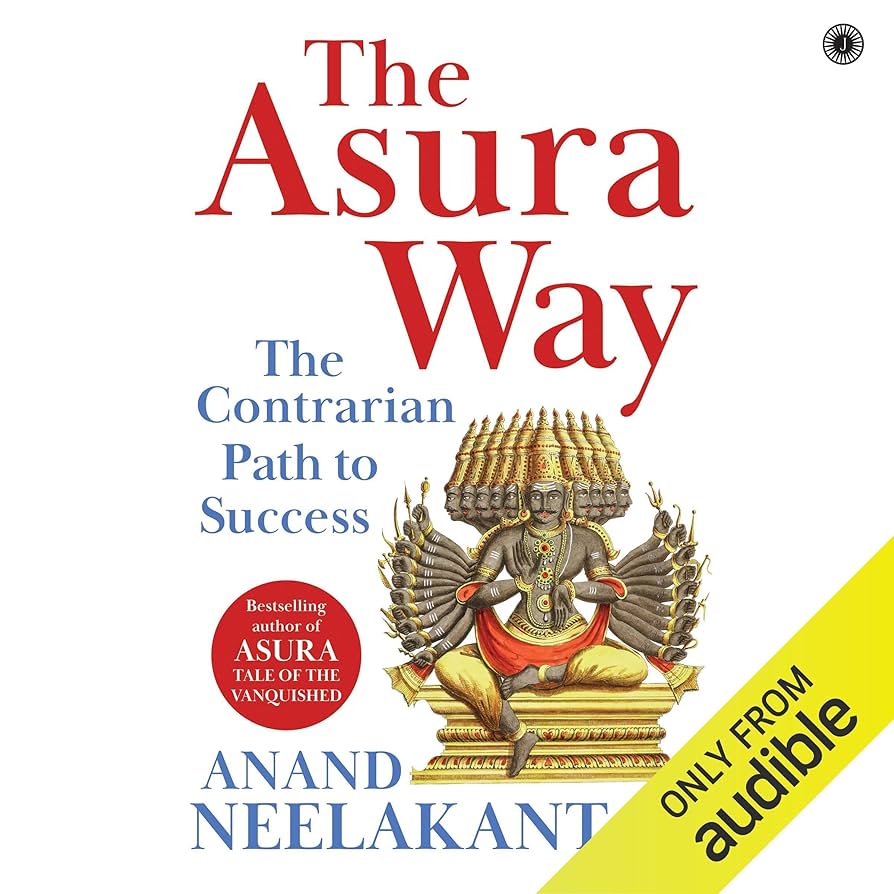
Anand Neelakantan did not leave fiction behind. In The Asura Way, he applies the philosophy he has gained through his novels to life itself. Here, qualities customarily described as “negative”, ambition, envy, ruthlessness, are considered potential tools for growth when employed sensibly. (Image courtesy: media-amazon)
It’s a sobering counterpoint to the often sterilized self-help universe. Anand isn’t urging you to become “good” or “virtuous.” He’s urging you to see the human psyche, accept contradictions, and tap into the ferocity within you for practical outcomes. Reading The Asura Way is akin to taking a masterclass in human nature disguised as mythology; it makes you think, what are the qualities I’ve denied in myself that could actually propel me forward?
This is what sets Anand apart: whether through myth or modern life lessons, he sparks curiosity. He never gives easy answers, but he makes sure you are adequately armed with the right questions. And those questions linger over you, long after the last page is finished being read.
Life, Success, and the Shades of Grey

Anand Neelakantan always confirms in his works that life cannot possibly be black and white. Heroes are not perfect, villains are not evil, and money sometimes, but not always, follows the textbook conventions. In The Asura Way: The Contrarian Path to Success, he takes the very characteristics that his characters all have, ambition, wit, determination, and even jealousy, and makes them a real-life blueprint for success.
Contrary to more conventional self-help books which sugarcoat ambition or gloss over defeat, Anand respects the messy, crazymaking elements of human ambition. He shows that the virtues that society prefers to demonize, the need for power, the unwillingness to be satisfied with what exists, the willingness to transgress convention, can be your greatest asset if employed constructively.
When you read The Asura Way, you realize that victory is not a straight line. It’s a labyrinth of choices, mistakes, reinventions, and bold bets. And as he humanizes his villains, Anand humanizes ambition. He encourages readers to break free from the “good vs. evil” thinking, appreciate the complexity in every decision, and recognize that sometimes the path to winning has nothing to do with being morally spotless; it’s about being strategically aware, self-aware, and unapologetic.
In a society obsessed with clean narratives and tidy success formulas, Anand’s counterintuitive school of thought is refreshing, provocative, and surprisingly useful. He doesn’t provide you the answer; he provides you perspective, and within that perspective there is power.
The Craft: Why Reading Him Feels Like Sitting in on a Conspiracy

Have you ever noticed how certain books leave you feeling observed, not in the creepy sense, but in a conspiratorial, insider kind of way? That’s Anand’s technique. He combines hard-hitting research with everyday language, interweaving scholarship and narrative in a way that gets you complicit in his literary experiments.
Each chapter is like a whispered secret: a questioning from the intangible fringes of history, requiring you to rethink the story that’s been told to you. His sentences have rhythm and cadence; they question as much as they tell. You don’t merely read his books; you argue with them, you debate with them, even quarrel with the characters in your head.
This is the sign of literature that stays with you: it doesn’t allow you to put the book down and forget. It forces you to see things differently. And that is what Anand is after: not passive consumption, but active reflection.
The Larger Question: Why We Crave Villains Who Speak
Why are we currently so fixated on morally ambiguous villains? From Marvel’s Killmonger to HBO’s Cersei Lannister, we crave characters who subvert the sort of simplistic notions of good and evil. Anand accesses this need, but with the further burden of mythological weight. He beautifully explains the same in his talk with the Good Gobar Show podcast host Nishant Parashar.
By having a voice for the voiceless, Anand reminds us that there are always many sides to a story. The hero’s quest is exciting, sure; but the villain’s quest is enlightening. It reveals the fault lines, contradictions, and human dilemmas that make stories really interesting. And it makes us ask: if everybody in our lives had a narrator, who would we be listening to, and who would we not be listening to?
Curtain Call: Dancing in the Grey
Ultimately, Anand Neelakantan is not just a writer; but he is also a literary provocateur. He coaxes his readers into stepping into taboo areas, into recognizing that morality, ambition, and power are not necessarily black or white. And blissfully unaware we all exist in shades of grey.
Through Ravana, Duryodhana, and Sivagami, he presents an opportunity to perceive the world not in clear black and white, but in shades of multifaceted, dazzling grey. His books are concerned with questions that remain, with points of view that will push your inhibitions, with tales that haunt you with queries.
And when you shut the last page, you see that the bad guy wasn’t just a figure in the story. The bad guy was the mirror. And through the mirror, you perceive yourself differently, more acutely, and maybe more truthfully.
To bring such motivational speakers to your stage, book through engage4more—India’s top platform for inspiring keynote speakers and talent. With over 2,500 artists, pacy bookings, and free event publicity, engage4more makes inspiration accessible, unforgettable, and meaningful. Also, enjoy our value adds like complimentary quizzing for your events along with free publicity by our post-event coverage via our social media handles!


